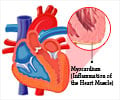A recent study suggests that ozone pollution has caused an increase in hospitalizations for cardiovascular disease.
- Cardiovascular disease is the leading cause of disease burden globally
- Along with climate change, ozone pollution is on the rise
- A new study shows that ozone pollution has been linked to a higher number of hospitalizations for cardiovascular disease
Ozone Pollution and its Effect on Cardiovascular Diseases
“During this three-year study, ozone was responsible for an increasing proportion of admissions for cardiovascular disease as time progressed,” said study author Professor Shaowei Wu of Xi’an Jiaotong University, China. “It is believed that climate change, by creating atmospheric conditions favoring ozone formation, will continue to raise concentrations in many parts of the world. Our results indicate that older people are particularly vulnerable to the adverse cardiovascular effects of ozone, meaning that worsening ozone pollution with climate change and the rapid aging of the global population may produce even greater risks of cardiovascular disease in the future.” Ozone is a gas and the main air pollutant in photochemical smog. Ozone pollution is different from the ozone layer, which absorbs most of the sun’s ultraviolet radiation. Ozone pollution is formed when other pollutants react in the presence of sunlight. These other pollutants are volatile organic compounds and nitrogen oxides, which are emitted by motor vehicles, power plants, industrial boilers, refineries, chemical plants, and biomass and fossil fuel burning facilities. Previous studies have suggested that ozone pollution harms the heart and blood vessels, but there is limited and inconclusive evidence about its influence on the risk of cardiovascular disease.TOP INSIGHT
Climate change is real, and ozone pollution has been linked to increased trips to the hospital for heart disease.
Daily eight-hour maximum average concentrations of ozone, fine particulate matter (PM2.5), inhalable particles (PM10), sulfur dioxide, nitrogen dioxide and carbon monoxide were obtained for each city from the China National Urban Air Quality Real-time Publishing Platform.
Throughout the study period, there were 6,444,441 hospital admissions for cardiovascular disease in the 70 cities and the average daily eight-hour maximum ozone concentration was 79.2 μg/m3. Exposure to ambient ozone was associated with increased hospital admissions for all cardiovascular diseases studied except hemorrhagic stroke, independent of other air pollutants.
For example, each 10 μg/m3 rise in the two-day average eight-hour maximum ozone concentration was associated with a 0.40% increase in hospital admissions for stroke, and 0.75% for acute myocardial infarction.3
Professor Wu said: “Although these increments look modest, it should be noted that ozone levels may surge to higher than 200 μg/m3 in summer, and these increases in hospitalizations would be amplified by more than 20 times to over 8% for stroke and 15% for acute myocardial infarction.”
Ozone Concentrations Above the WHO Limit Increase Hospitalizations
The researchers also estimated the excessive admission risk for cardiovascular disease associated with ozone concentrations at or above the WHO air quality guideline (100 µg/m3) compared to levels below 70 μg/m3. Ozone levels below 70 μg/m3 are mostly naturally occurring and not due to human activity. Compared to two-day average eight-hour maximum concentrations below 70 μg/m3, levels of 100 µg/m3 or higher were associated with substantial increases in hospital admissions for cardiovascular disease, ranging from 3.38% for stroke to 6.52% for acute myocardial infarction. Nevertheless, lower concentrations of 70 to 99 µg/m3 (vs. below 70 μg/m3) were also linked with increases in hospital admissions, ranging from 2.26% for heart failure to 3.21% for coronary heart disease.In an accompanying editorial, Professor Thomas Münzel and co-authors said: “Projections for Europe suggest that ozone will play a more dominant role as a health risk factor in the future due to climate change with rising temperature and, accordingly, increasing photochemical formation of ozone. The strong link between climate change and air quality means that reducing emissions in the long term to tackle global warming will play a key role in alleviating ozone pollution and improving the air that we breathe.”
- Ozone pollution and hospital admissions for cardiovascular events - (https://academic.oup.com/eurheartj/advance-article/doi/10.1093/eurheartj/ehad091/7070974)
Source-Medindia
 MEDINDIA
MEDINDIA





 Email
Email










